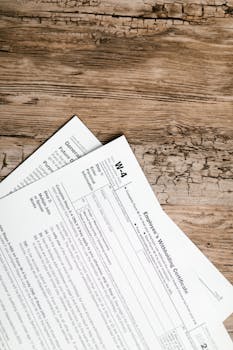
E-Verify Explained: Your Guide to Legal Hiring in the US for Employers
Navigating employment law in the United States can be complex, especially when it comes to verifying the eligibility of new hires. Understanding and utilizing E-Verify is crucial for employers seeking to comply with federal regulations and avoid costly penalties. This comprehensive guide breaks down everything you need to know about E-Verify, from its purpose and functionality to its implications for your business.
What is E-Verify?
E-Verify, officially known as the Employer Verification of Employment Eligibility Program, is a free, internet-based system operated by the U.S. Citizenship and Immigration Services (USCIS), a component of the Department of Homeland Security (DHS), in partnership with the Social Security Administration (SSA). This system allows employers to electronically verify the employment eligibility of their newly hired employees. It's designed to help businesses comply with the Immigration Reform and Control Act of 1986 (IRCA), which mandates that employers only hire individuals authorized to work in the United States. Simply put, E-Verify is a crucial tool for ensuring a legal and compliant workforce.
How Does E-Verify Work?
The E-Verify process is relatively straightforward:
Employee Data Entry: After completing Form I-9, Employment Eligibility Verification, the employer enters the employee's information, including their name, Social Security Number (SSN), and date of birth, into the E-Verify system.
Data Comparison: E-Verify automatically compares the data provided by the employee against government databases maintained by the SSA and DHS.
Result Generation: The system generates one of three results:
- Authorization: Indicates the employee's information matches government records, confirming their eligibility to work.
- Tentative Non-Confirmation (TNC): Suggests a mismatch between the provided information and government records. This requires further investigation and potentially additional documentation from the employee.
- Error: Indicates an issue with the data entered by the employer, requiring correction and resubmission.
Resolution of TNCs: If a TNC is received, the employer must notify the employee and provide them an opportunity to resolve the discrepancy. This often involves providing additional documentation, such as a corrected Social Security card or other evidence of legal employment authorization. Failure to resolve a TNC within a specified timeframe can lead to further complications.
Record Keeping: Employers are required to maintain detailed records of the E-Verify process, including all related documents and communication. Proper record keeping is essential for demonstrating compliance with IRCA and avoiding potential legal challenges.
Who Must Use E-Verify?
E-Verify participation is mandatory in certain states and for specific federal contractors. However, many businesses voluntarily enroll in E-Verify to proactively demonstrate compliance and mitigate potential risks. Knowing whether your business is required to use E-Verify is crucial. Consult the DHS website or seek legal advice to determine your specific obligations.
Benefits of Using E-Verify
The advantages of utilizing E-Verify extend beyond simple compliance:
- Reduced Risk of Penalties: Using E-Verify significantly reduces the risk of fines and other penalties associated with hiring unauthorized workers. This includes potential civil and criminal penalties.
- Enhanced Legal Compliance: It demonstrates a commitment to following employment laws, mitigating legal risks and reducing potential lawsuits.
- Improved Hiring Practices: It streamlines the hiring process, helping employers identify and address potential issues early on.
- More Efficient Workforce: It helps create a legally compliant workforce, enhancing efficiency and productivity.
- Stronger Security Measures: It provides an additional layer of security, helping prevent identity theft and fraud within the workplace.
Common E-Verify Mistakes to Avoid
Many employers make common mistakes when using E-Verify. Avoiding these errors is crucial for ensuring a smooth and efficient process:
- Incorrect Data Entry: Double-check all information entered into the system to prevent errors and delays.
- Failure to Follow Up on TNCs: Promptly address and resolve TNCs within the designated timeframe.
- Poor Record Keeping: Maintain accurate and complete records of all E-Verify activities.
- Not Understanding the Limitations of E-Verify: E-Verify doesn't guarantee the complete absence of unauthorized workers; it is a tool to help reduce the risk.
E-Verify and I-9 Compliance
E-Verify works in conjunction with Form I-9. Form I-9 is a paper-based form that all employers must complete with each new hire. E-Verify is then used to electronically verify the information provided on Form I-9. It's important to understand that both I-9 completion and E-Verify are integral parts of maintaining employment eligibility compliance.
Staying Up-to-Date on E-Verify Changes
The E-Verify system and related regulations are periodically updated. Staying informed about these changes is crucial for maintaining compliance. Regularly check the DHS website for announcements and updates on E-Verify policies and procedures.
In conclusion, understanding and utilizing E-Verify is crucial for employers seeking to ensure a legally compliant workforce. By proactively using the system and adhering to best practices, businesses can significantly reduce their risk of penalties while demonstrating a commitment to ethical and lawful employment practices. Remember, compliance is key to a successful and thriving business.



















